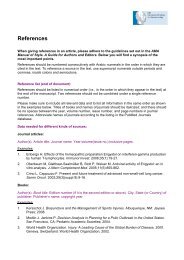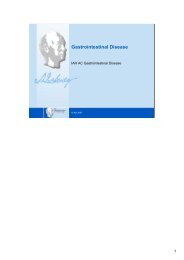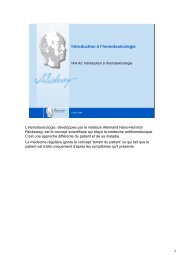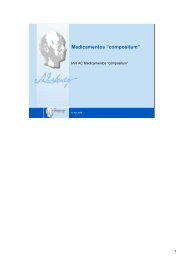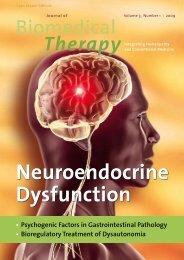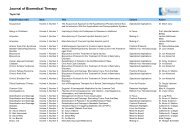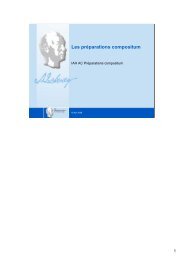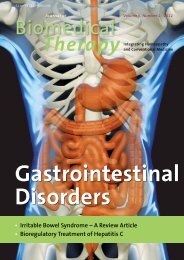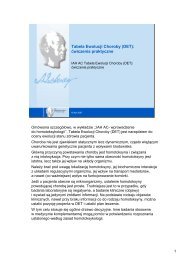Metabolic Syndrome - International Academy of Homotoxicology
Metabolic Syndrome - International Academy of Homotoxicology
Metabolic Syndrome - International Academy of Homotoxicology
Create successful ePaper yourself
Turn your PDF publications into a flip-book with our unique Google optimized e-Paper software.
) S p e c i a l i z e d A p p l i c a t i o n s<br />
Intravenous therapy is an important<br />
component <strong>of</strong> treatment in many acute<br />
and chronic diseases, especially in cases<br />
<strong>of</strong> metabolic syndrome.<br />
Treatment concept<br />
I recommend twice-yearly infusion<br />
therapy for my patients – ideally,<br />
twice-weekly infusions (to a total <strong>of</strong><br />
ten) each spring and fall. Lymphomyosot<br />
is the basic medication. Its<br />
constituents act on four different<br />
levels: on the lymphatic, respiratory,<br />
and digestive systems and on the<br />
urinary tract. Infusion therapy<br />
should be preceded by approximately<br />
two weeks <strong>of</strong> oral treatment with<br />
Lymphomyosot at the standard dosage<br />
<strong>of</strong> 1 tablet 3 times a day or 15<br />
drops 3 times a day. In multimorbid<br />
or severely debilitated patients, better<br />
tolerance is achieved by reducing<br />
the dosage to 8 to 10 drops 3 times<br />
a day.<br />
In patients with metabolic syndrome,<br />
both visceral adipose tissue<br />
and the interaction <strong>of</strong> free radicals<br />
and advanced glycation end products<br />
contribute to metabolic inflammation<br />
(which can be corroborated<br />
by ultrasensitive CRP measurements,<br />
among other tests). To reduce inflammation,<br />
I <strong>of</strong>ten add Traumeel<br />
(antihomotoxic medicine’s most important<br />
anti-inflammatory) to the<br />
infusions. As a component <strong>of</strong> the<br />
citric acid (Krebs) cycle, dl-malic<br />
acid has notable metabolism-stabilizing<br />
effects in metabolic syndrome.<br />
Below are several examples <strong>of</strong> timetested<br />
infusions with special emphases.<br />
1 The products Coenzyme compositum<br />
and Ubichinon compositum<br />
are not registered for intravenous<br />
use in most countries and should<br />
therefore be administered either i.m.<br />
or s.c. after every infusion.<br />
Toxic sorbitol<br />
Polyol pathway<br />
Protein kinase pathway PKC<br />
Expression <strong>of</strong> inflammation<br />
mediators NF-kB<br />
Glucose<br />
AGEs (advanced glycation end products)<br />
Auto-oxidation pathway<br />
Oxygen radical pathway<br />
NO-reduction<br />
© iStockphoto.com/Wa Li<br />
Figure 1: Pathological pathways triggered by elevated blood glucose levels<br />
1 Please note that some <strong>of</strong> the medications listed may not be available for injection in a few countries. It is the practitioner’s responsibility to use the medications as<br />
directed in the product information.<br />
) 21<br />
Journal <strong>of</strong> Biomedical Therapy 2008 ) Vol. 2, No. 1



